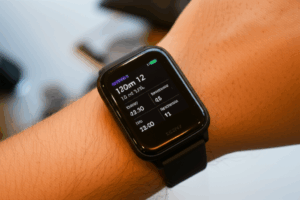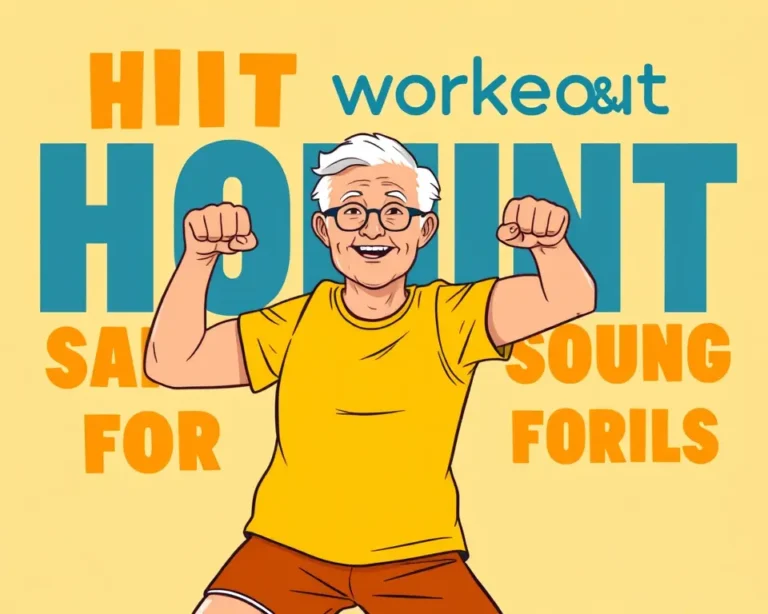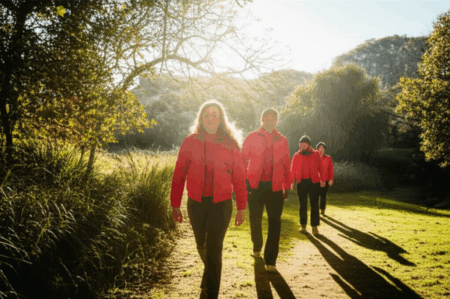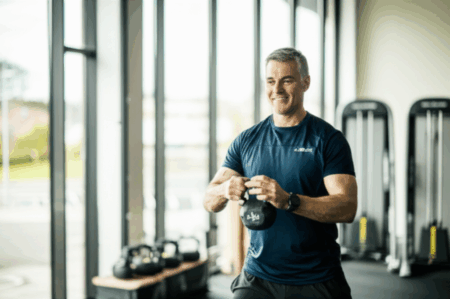High-Intensity Interval Training (HIIT) has gained popularity as a time-efficient way to boost fitness. While often associated with younger adults, HIIT can be a game-changer for seniors seeking to improve their health and well-being. The key is adapting these workouts to suit individual needs and abilities, ensuring safety and effectiveness.
Why HIIT Works for Seniors
As we age, maintaining cardiovascular health, muscle strength, and overall fitness becomes increasingly important. HIIT offers a powerful approach to achieving these goals, with benefits including:
- Improved Cardiovascular Health: HIIT can improve heart health in a shorter time compared to other types of exercise. It also enhances the body’s ability to use oxygen, a protective factor against heart disease.
- Increased Muscle Strength: HIIT workouts can help increase muscle strength, combating the natural decline in muscle mass that occurs with aging.
- Better Cholesterol Levels: Regular HIIT exercise may improve cholesterol levels, contributing to better heart health.
- Lower Blood Sugar: HIIT can help lower blood sugar and improve insulin resistance.
- Boosted Metabolism: HIIT workouts can boost metabolism, aiding in weight management.
- Reduced Blood Pressure: Studies have shown that HIIT can help lower blood pressure.
- Weight Loss: HIIT can be an effective tool for weight loss, helping to reduce abdominal fat.
- Enhanced Cognitive Function: High-intensity interval exercise may improve an older person’s brain function for up to five years.
- Increased Engagement: HIIT’s time efficiency may lead to increased engagement with exercise.
- Slowed Aging: HIIT training can be effective in helping elderly adults slow down the natural aging process and maintain quality of life.
Dr. Sarah Thompson, a geriatric fitness specialist at Austin Wellness Center, emphasizes that “HIIT workouts, when properly adapted, can significantly improve cardiovascular health, muscle strength, and overall well-being in older adults.”
Safety First: Key Considerations for Senior HIIT
Before starting any new exercise program, especially HIIT, it’s crucial to consult with a healthcare provider. They can assess individual health conditions and provide personalized recommendations. Other key safety considerations include:
- Start Slow: Begin with short bursts of activity followed by longer rest periods. For example, try 30 seconds of brisk walking followed by 1-2 minutes of gentle strolling. Gradually increase the intensity and duration of active intervals as fitness improves.
- Choose Low-Impact Exercises: Opt for low-impact activities like walking, cycling, swimming, or chair-based exercises to minimize stress on joints.
- Proper Form: Maintaining proper form and technique is essential to prevent injuries. If unsure, consult with an exercise physiologist or trainer.
- Listen to Your Body: Pay attention to any pain or discomfort and adjust the workout accordingly. Don’t push through pain.
- Stay Hydrated: Drink plenty of water before, during, and after HIIT workouts.
- Balance Exercises: Incorporating balance exercises can help prevent falls.
- Adequate Recovery: Allow ample recovery time between HIIT sessions, alternating with gentle activities like walking or yoga.
Modifying HIIT Exercises for Seniors
Traditional HIIT exercises can be modified to suit senior fitness levels. Here are some examples:
- Jumping Jacks: Replace with side steps or arm raises.
- Burpees: Substitute with wall push-ups or gentle squats.
- Running: Opt for brisk walking or cycling.
- High-Impact Cardio: Choose low-impact cardio routines like brisk walking in place or on a treadmill, gentle stepping jacks, or arm raises.
The goal is to keep moving while respecting the body’s limits.
Sample Senior-Friendly HIIT Workouts
Here are a few sample HIIT routines tailored for older adults:
Workout 1: Walking HIIT
- Warm-up: 5 minutes of light walking.
- HIIT Interval: 30 seconds of brisk walking.
- Rest Interval: 1-2 minutes of slow walking.
- Repeat: 6-8 cycles.
- Cool-down: 5 minutes of light stretching.
Workout 2: Chair-Based HIIT
- Warm-up: 5 minutes of gentle arm circles and leg swings.
- HIIT Exercises (30 seconds each, followed by 1 minute rest):
- Seated marches
- Chair stands (sitting to standing)
- Arm raises
- Lightweight dumbbell presses
- Repeat: 2-3 cycles.
- Cool-down: 5 minutes of gentle stretching.
Workout 3: Aqua HIIT
- Warm-up: 5 minutes of light swimming.
- HIIT Interval: 30 seconds of fast-paced swimming.
- Rest Interval: 1-2 minutes of leisurely swimming.
- Repeat: 6-8 cycles.
- Cool-down: 5 minutes of gentle swimming.
Workout 4: No Equipment HIIT
- Warm-up: 5 minutes of slow march in place and arm circles.
- HIIT Exercises (30 seconds each, followed by 1 minute rest):
- Basketball jumps
- Front and side jumping jacks (modified)
- Skaters
- Shoulder taps/mountain climbers (modified on knees if needed)
- High knees/step backs
- Repeat: 2-3 cycles.
- Cool-down: 5 minutes of light stretching.
The Talk Test: Gauging Intensity
A simple way to monitor intensity is the “talk test.” During high-intensity intervals, you should be able to speak in short phrases but not carry on a full conversation. If you can easily chat, you may need to increase the intensity. If you’re gasping for air, scale back.
The Importance of Recovery
Rest and recovery are crucial for any HIIT program, especially for seniors. Allow ample recovery time between sessions to allow the body to adapt and grow stronger. This could mean alternating HIIT days with gentle activities like walking or yoga.
Real-Life Success Stories
Many seniors have found success with HIIT, experiencing improved energy levels, strength, and overall well-being. Jane, a 65-year-old retired teacher, started HIIT to improve her cardiovascular health. By incorporating low-impact exercises and longer rest intervals, she gradually increased her stamina and strength, leading to improved heart health and reduced joint pain.
Making HIIT a Sustainable Habit
To make HIIT a sustainable part of your fitness routine, consider these tips:
- Find Activities You Enjoy: Choose exercises that you find enjoyable to increase adherence.
- Set Realistic Goals: Start with small, achievable goals and gradually increase the intensity and duration of workouts.
- Track Your Progress: Monitor your progress to stay motivated and see how far you’ve come.
- Find a Workout Buddy: Exercising with a friend can provide support and accountability.
- Be Patient: It takes time to see results, so be patient and persistent.
HIIT can be a safe and effective way for seniors to boost their fitness, improve their health, and maintain their independence. By following these guidelines and listening to your body, you can unlock the many benefits of HIIT and enjoy a more active and fulfilling life.







